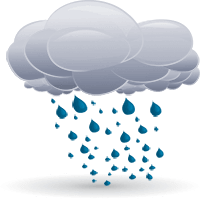et’s talk a little bit about soil erosion. We all know it happens. It’s a natural process. Heck, the Grand Canyon is nothing but soil erosion that happened over the millennia. Dust, dirt, silt, it all happens when you disturb the soil.
So, what’s the big deal? Haven’t we been dealing with soil erosion since the days of the Dust Bowl?
The big deal is that while agriculture has done a good job of reducing erosion since the “dirty thirties,” we still have a LOOOONNNNGGGG way to go if we are going to have the resource base necessary to feed nine billion people by the middle of the 21st century.
We have a lot of environmental challenges — climate change, water quality, species decline — all of which are “sexier” than soil erosion. Let’s face it, it’s hard to make dirt attractive. I personally think that’s why most folks seem to prefer the term “regenerative agriculture” to “soil health.” I mean dirt is just there. It doesn’t go away, right?
Wrong. There is an old saying, “all civilization rests on an inch of topsoil.” This is as true now as ever. After all, you can’t be a butcher, baker or candlestick maker let alone a lawyer or accountant if you have to spend all your time foraging for food. Without healthy soil we can’t have agriculture and without agriculture our civilization collapses. Soil truly is the base of our existence. But while we focus on the “sexier” environmental challenges of our day, we are quickly losing the ground we stand on.
It’s true that we have done a lot of work to control soil erosion. I often point out that while the drought that hit the Southern Plains from 2011 to 2015 was worse than the one that caused the Dust Bowl back in the 1930s we didn’t see the return of the dust storms. Yes, there was dirt blowing, but if you compare that to the “dusters” of the 1930s some of which would start in places like Oklahoma and continue on across the country, eventually coating ships miles off shore with dust from the plains, it’s like comparing a motorcycle to a semi-truck. We have done a good job at reducing erosion.
That said, there’s more to do. It’s been estimated that Oklahoma loses, on average, between two and three tons of soil per acre per year. That equals out to about three pounds of soil lost for every pound of wheat grown in the State.
It’s also been estimated that world-wide we are losing around 10 million hectares of crop land annually to soil erosion — that equals out to almost 25 million acres lost every year. That’s roughly the equivalent of losing all the harvested crop land in Iowa.
That’s not sustainable, whether you’re trying to feed the world or make a living in agriculture.
The good news is that there is something we can do about it and slowly but surely folks are starting to come to the understanding that the same things that address erosion are the same things that address all those “sexy” problems like climate change and water quality. More and more people are starting to realize that practices that mimic naturethings like no-till, cover crops and improved grazing, help address all of these issues, and not just soil erosion, but also climate change, water issues and even wildlife habitat loss. It’s also becoming more and more clear that these same practices can also have a positive impact on producers’ bottom lines.
All this adds up to a way forward that has the potential to help sustain both our natural resource base and the profitability of production agriculture. There is a way forward. The question is, will we take it before the “quiet crisis” of soil erosion starts to really make some noise?
EDITOR’S NOTE: Clay Pope is an outreach contractor with the USDA Southern Plains Climate Hub. You can read more by Clay and listen to his podcast at https://southernplainsperspective.wordpress.com/ or by going to the USDA Southern Plains Climate Hub website.


